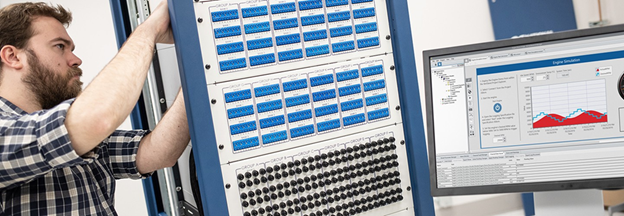NI’s HIL Hardware Design Guide
Guide Overview

Hardware-in-the-Loop (HIL) testing is a critical methodology for the validation and verification of embedded control systems. HIL enables engineers to simulate real-world conditions and test system behavior safely, efficiently, and repeatedly. As systems become more complex and software-defined, the importance of scalable, reliable, and maintainable HIL platforms has grown significantly.
This design guide provides a comprehensive overview of the hardware platform used in HIL systems built with National Instruments (NI) technology. It is intended for engineers, system integrators, and technical decision-makers who are designing, building, or maintaining HIL test systems using NI’s modular hardware platforms, including PXI (PCI eXtensions for Instrumentation), SLSC (Switch Load Signal Conditioning), and supporting accessories.
Audience and Scope
The focus of this guide is on the physical and architectural aspects of the HIL system — how to select, configure, and integrate the hardware components that form the backbone of a test solution. This includes:
- Choosing the appropriate PXI chassis, controllers, and modules
- Leveraging the SLSC platform for fault insertion, signal conditioning, switching, and sensor/load emulation
- Implementing standard cabling and interfaces to improve interoperability, reduce custom design effort, and accelerate build and deployment times
By following the design principles and best practices outlined in this guide, teams can streamline the development of high-performance HIL systems that are robust, scalable, and easier to maintain. The document is structured to provide both conceptual understanding and practical implementation details, making it a valuable resource throughout the lifecycle of your test system — from initial design through deployment and beyond.
Whether you’re building your first HIL bench or scaling up to support a large, multi-channel system, this guide will help you make informed hardware design choices that align with your technical goals and project timelines.